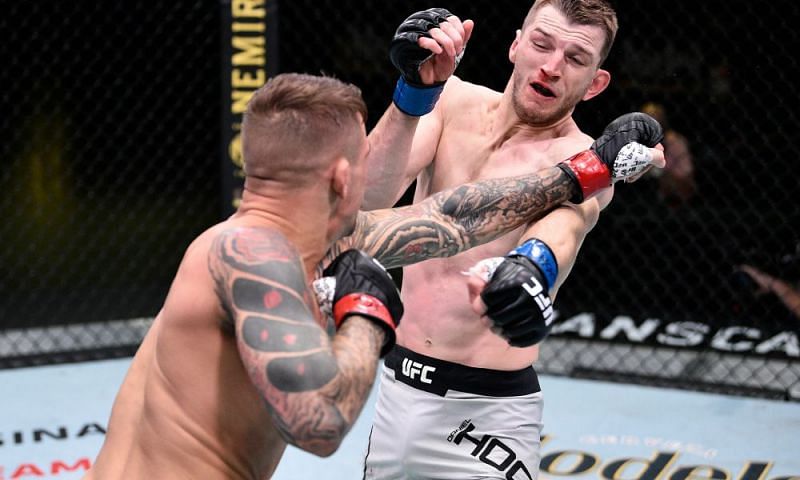
The best and worst from UFC on ESPN: Poirier vs. Hooker
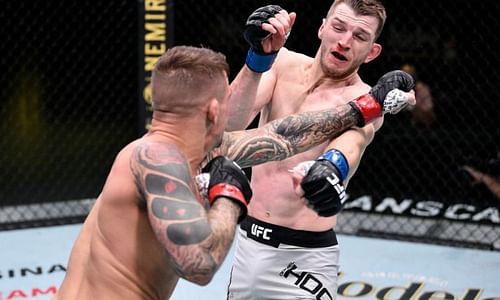
After a run of 5 straight weekends with a UFC show at Las Vegas’ UFC APEX facility, we’ve finally reached the end of the stretch.
Last night’s UFC on ESPN: Poirier vs. Hooker was the final show to take place before the action moves to Abu Dhabi’s ‘Fight Island’ in two weeks’ time, and it was a great way to sign these shows off.
We were treated to 10 fights, almost all of which provided great entertainment. Two were genuine contenders for 2020’s Fight of the Year, and we were also handed six excellent finishes. Basically, this was one of the better non-pay-per-view events we’re likely to get this year.
Here are the best and worst moments from UFC on ESPN: Poirier vs. Hooker.
#1 Best: Poirier and Hooker’s crazy war might be the best of 2020
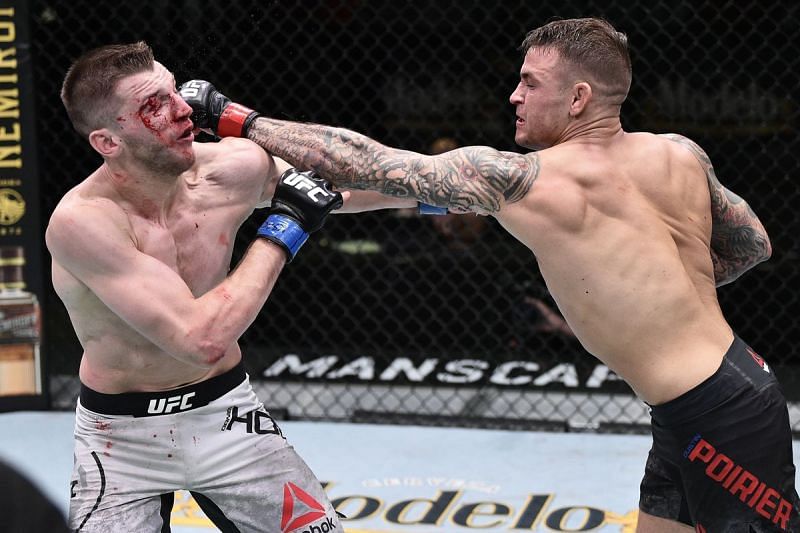
Early in the night I was convinced that one of the undercard fights would have the ‘Fight of the Night’ bonus sewed up, but that was before Dustin Poirier and Dan Hooker stepped into the Octagon for the main event.
The two men were expected to put on an exciting fight, but wow, they simply blew away any expectations people had going in by simply going to war for the full 25 minutes. By the end, both men were beaten, battered, and bloody, and while Poirier got his hand raised, Hooker didn’t feel like a loser either.
‘The Hangman’ was actually winning the fight in its early stages. His rangy striking was clearly giving Poirier trouble, particularly in the first round when he worked him over with low kicks, left hooks and shots to the body. Poirier came back strongly in the second and drew the New Zealander into a brawl – but still found himself badly hurt in the waning moments of the fight.
By the third, though, Hooker seemed more willing to engage ‘The Diamond’ in a brawl – perhaps as he’d had early success in doing so – and by abandoning his range fighting, he allowed Poirier a way back in. And the former Interim UFC champ took that chance with both hands and turned the tables, landing the heavier blows on the feet and getting the better of Hooker on the ground too.
In the end, it was Poirier who took a unanimous decision, while Hooker was left to rue what could’ve been. Overall though, this was an instant classic. How neither man was knocked down – let alone TKO’d – is beyond me.
March’s Joanna Jedrzejczyk vs. Weili Zhang fight may well still be considered the Fight of the Year, but at worst this one deserves second place. As for what’s next for the two? Hopefully some time off, as they need to heal their wounds. It’d be hard to say they don’t deserve it!
#1 Worst: Witt shows the danger of taking a late-notice fight in the UFC
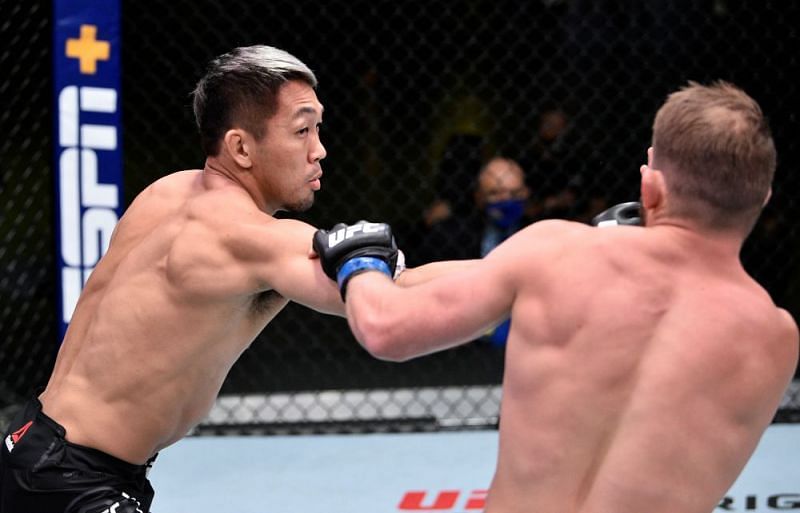
When I wrote my preview for this show earlier in the week, Japan’s Takashi Sato was due to face Ramiz Brahimaj in a preliminary fight. That was the case right up until Thursday, when one of Brahimaj’s cornermen tested positive for COVID-19, forcing the UFC newcomer off the card.
Given the late notice, it seemed likely that the fight would be scrapped altogether – but instead, the UFC were able to find a replacement for Brahimaj in the form of debutant Jason Witt. ‘The Vanilla Gorilla’ agreed to step in on essentially 48 hours notice – and the UFC even had to move the fight to the main card in order for Witt’s paperwork to be completed.
Unfortunately, the gamble didn’t pay off. Witt looked to be in decent shape and made the 170lbs Welterweight limit comfortably – but when it came to the fight, Sato was simply far too quick for him. ‘Ten’ landed a huge left hand that dropped the newcomer, and despite Witt’s attempts to continue, he ended up being stopped in just 48 seconds.
The story of Witt should stand as a cautionary tale to fighters willing to take a short-notice fight with the UFC, particularly during the current pandemic. In the past, a regional fighter may have been preparing for another fight before getting the call, but someone like Witt was likely just doing some light training at best before this.
What did he get for his troubles? At most, probably $10,000 in show money and then a potentially dangerous concussion. Sure, he’s likely to get another UFC shot off the back of his willingness, but this may be a decision he lives to regret in the future.
#2 Best: Woodson and Erosa nearly steal the show
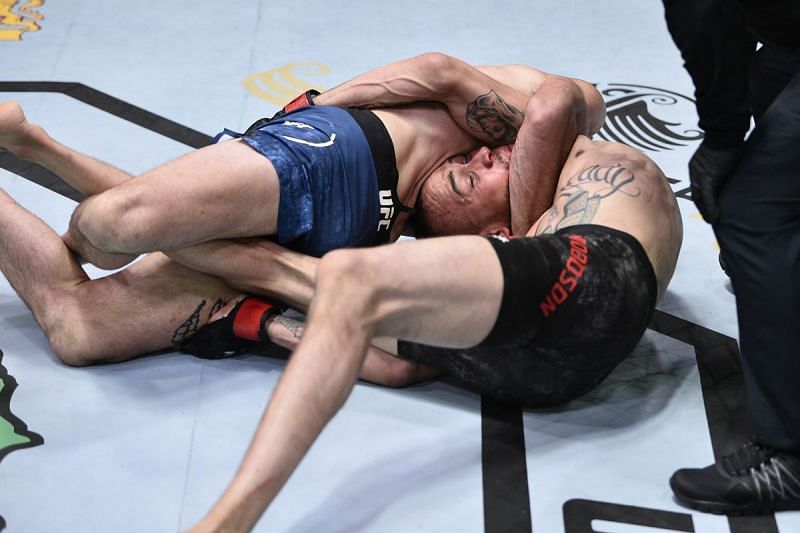
The main card opener between Sean Woodson and Julian Erosa wasn’t expected to be a great fight. In fact, due to Erosa taking it on late notice – more on that later – Woodson was the biggest betting favourite on the card and was expected to crush his foe.
Incredibly though, these two Featherweights – fighting at a 150lbs Catchweight due to Erosa’s late notice – put on an absolute war from start to finish. This was a fight that on any other card would comfortably have won the Fight of the Night award. I’d go as far as calling it a low-end contender for 2020’s Fight of the Year, in fact.
Woodson started off well. ‘The Sniper’ showed off his unorthodox boxing game in the first round, dancing around and flinging punches at Erosa from odd angles, and seemed to be in complete control. But once the second round began, ‘Juicy J’ decided he’d had enough of being a punching bag.
He turned the fight into a dirty brawl by constantly walking his opponent down, forcing Woodson into wild exchanges that simply didn’t suit his style. By the end of the second, it was clear that the tide was turning, and after some more incredible trades in the third, the former TUF fighter latched onto a brabo choke that forced Woodson to tap out.
‘The Sniper’ will surely bounce back, but this was a tremendous win for Erosa, particularly given his late notice. The only thing that could’ve made this fight better? In the pre-COVID world, a rabid crowd may have turned both men into stars.
On an added note, why am I suggesting it would be okay for Erosa to take a late notice fight while not saying the same for Witt? Well, for starters, Erosa was already part of the UFC’s roster. Before last night he’d been inside the Octagon on 5 occasions, with his debut dating back to 2015. That added experience – plus an extra couple of days notice – likely made all the difference.
#2 Worst: Gian Villante shows moving up in weight isn’t always a good idea
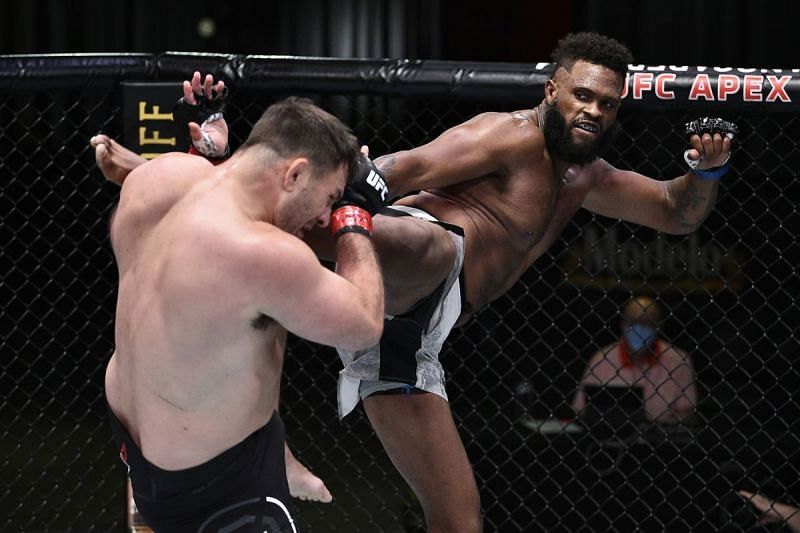
After going 7-8 as a Light-Heavyweight after joining the UFC in 2013, at 34 years old, Gian Villante clearly decided that a change was needed in order for him to rejuvenate his career. That change saw him move back up to Heavyweight – where he’d competed earlier in his career – to face Maurice Greene last night.
Villante actually debuted in StrikeForce as a Heavyweight – but to say he looked different here would be an understatement. Rather than adding extra muscle to his already-impressive frame, it appeared that the New Yorker had simply decided to stop any kind of dieting, and instead looked badly out of shape.
He actually didn’t fight too badly early on in what was a back-and-forth fight, but by the third round he was clearly tired. He was able to drop Greene with a counter shot, but when he attempted to finish the bigger man on the ground, he quickly ran out of steam.
Seconds later, the New Yorker was tapping out, falling victim to a rare arm triangle choke from top position with Greene in half-guard. The finish was so strange that commentators Michael Bisping and Dominick Cruz were both baffled.
It was a strong finish by Greene, but wasn’t exactly reminiscent of Alexei Oleinik’s famed Ezekiel chokes from the bottom – it was made possible almost purely by Villante simply running out of gas entirely.
Given his physical shape, there’s every chance that he ends up being cut by the UFC for his showing here. And for a fighter who’s clearly got a lot of athletic talent, that’s sad. It just shows that sometimes, switching weight classes to rejuvenate a career doesn’t work.
#3 Best: The smaller Octagon once again works wonders for exciting fights
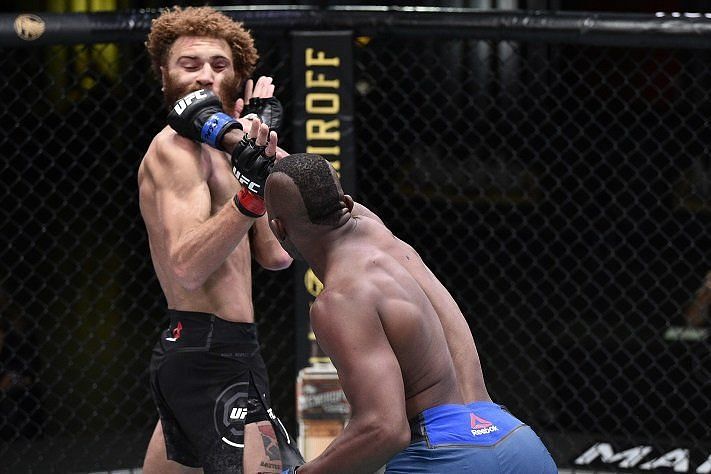
Around a decade ago, the UFC’s sister promotion – the WEC – was renowned for putting on incredibly exciting shows, filled with crazy fights and highlight-reel finishes. The promotion even outshone its much bigger counterpart at times due to this.
One theory on what made the WEC’s fights so exciting was that the promotion used a smaller cage in comparison to the UFC’s Octagon. Of course, the WEC closed up shop in late 2010 – but the debate around the effect of the cage size on fight quality is beginning to pick up steam again.
That’s because the UFC’s APEX facility uses the same size Octagon – with an area of 518 square feet – as the WEC did.
And in comparison to the fights we saw in the larger Octagon (with an area of 746 square feet) in Jacksonville in the earlier days of the Covid-19 pandemic, the ones taking place in the UFC APEX have been far more exciting.
Last night’s show was no different, as we were treated to six finishes and two Fight of the Year contenders.
In fact, to crunch some numbers, the UFC has put on a total of 55 fights since moving to the APEX on May 30th. Of those fights, 29 have seen a finish of some kind – a finish percentage of 52%. In comparison, the UFC’s shows in Jacksonville featured 32 fights, with 15 finishes, a finish percentage of 46%.
That doesn’t sound all that different, but when you take into consideration the ultra-entertaining fights that went the distance in the UFC APEX – Poirier/Hooker, Burgos/Emmett, and Quarantillo/Carlyle to name 3 – it becomes quite clear that the smaller Octagon does indeed produce a better quality of fights.
Whether the UFC's ‘Fight Island’ in Abu Dhabi will feature the smaller Octagon is a question mark right now, but MMA fans should be hoping it does, as last night’s show was fantastic, and part of that was definitely down to its throwback to the WEC.